Dating back to the 18th century, academic textbooks are still an essential part of the educational experience. Contributing to that vast canon of knowledge, several faculty members at University of Colorado College of Nursing authored and/or edited textbooks that are read and studied worldwide.
Having faculty involved in researching, writing, and editing textbooks strengthens a college’s reputation for excellence. From a professional-development standpoint, textbooks give faculty an opportunity to stay current on new trends and to collaborate with thought leaders from around the world.
Though the textbook industry reported $3.7 billion in sales in 2021, the sector doesn’t necessarily generate “big bucks” for the authors and editors who research and develop the content, but that’s apparently not the point of embarking on such endeavors.
“I would hate to translate my royalties into an hourly wage,” says CU College of Nursing Professor and Senior Associate Dean for Faculty and Students, Amy Barton, PhD, RN. Barton collaborated with six other healthcare professionals on writing and editing a textbook, “Fundamentals of Health Care Improvement.” “Let’s put it this way: It’s not something I do for money.”
Makic’s worthwhile ‘side gig’
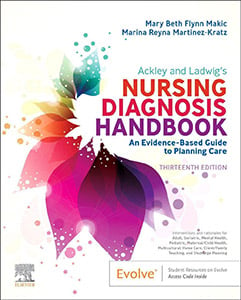
Ackley and Ladwig’s Nursing Diagnosis Handbook: An Evidence-Based Guide to Planning Care |
While publishing and engaging in scholarship is an expectation among faculty, CU Nursing Professor and Specialty Director Mary Beth Flynn Makic, PhD, RN, says she takes great care to ensure that developing textbook content remains a “side gig” that doesn’t interfere with her day-to-day responsibilities at the college.
“The school has really strong conflict-of-interest rules that we need to follow – especially if you get paid for what you are doing,” Makic says. “I am very cognizant of the fact that I do earn a small income, so I tend to categorically separate this work on evenings and weekends to avoid any conflict of interest.”
Makic is the co-editor of “Ackley and Ladwig’s Nursing Diagnosis Handbook: An Evidence-Based Guide to Planning Care,” which sold over 200,000 units in the 11th edition and more than 170,000 units in the 12th edition. She also authored several chapters in the handbook.
Released in March, 2022, the 13th edition has sold 10,000-plus copies so far. The handbook has been translated into Turkish, Chinese, and German.
Makic also recruited colleagues from CU Nursing (including Tammy Spencer, DNP, RN; Susan Bonini, EdD, MSN, RN; and Kelly Henrichs, DNP, RN) to contribute chapters to the handbook. Despite the involvement of CU faculty, she doesn’t recommend the textbook for colleagues because of ethical concerns.
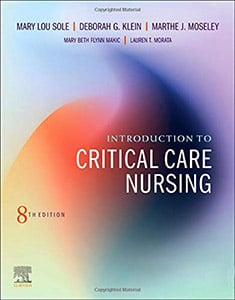
Introduction to Critical Care Nursing |
“I have zero engagement with undergraduate faculty when they decide what textbooks they use,” Makic says, noting that the university system’s policy clearly states that editors and authors cannot recommend any textbooks they edit to faculty colleagues. “But if they happen to use the books in their courses, then that’s great.”
In addition to the Ackley book, Makic is involved with developing “Introduction to Critical Care Nursing,” which has sold nearly 45,000 copies between its seventh and eighth edition with translations in Chinese and Japanese. She also is a contributor of a niche textbook, “Trauma Nursing: Resuscitation Through Rehabilitation,” which has sold over 1,200 copies to date.
Since the books are revised every three years, Makic says she gets “a good workflow” that doesn’t overwhelm or interfere with her already busy schedule.
Rosenthal co-edits best-selling pharmacology book
CU Nursing Assistant Dean of DNP Programs and Associate Professor Laura Rosenthal, DNP, ACNP, collaborates on editing what’s widely regarded as the definitive pharmacology resource for nurses, “Lehne’s Pharmacology for Nursing,” which publishes a new edition every three years.
Currently working on the 12th edition, Rosenthal came onboard with the textbook on the ninth edition after the original author and editor, Richard Lehne, PhD, passed away. She partners with another editor, Jacqueline Rosenjack Burchum, DNSc, from the University of Tennessee Health Science Center, on revising the content.
“When I do guest lectures, a lot of students are kind of starstruck and ask me to sign their books. I guess it’s kind of exciting to meet someone who wrote their textbook.” – Laura Rosenthal, DNP, ACNP, CU Nursing Assistant Dean of DNP Programs and Associate Professor
The partners roughly divide the work in half between each other to keep their workload manageable. The most current edition runs 1,408 pages and weighs 6.19 pounds, according to the product details on Amazon.
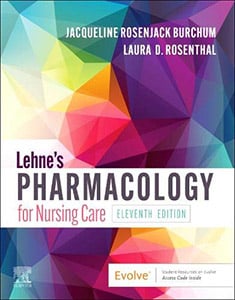
Lehne’s Pharmacology for Nursing |
While the late Lehne established a solid format and foundation for the guide, Rosenthal says it still requires substantial updates with each new edition. The editors also need to be able to defend their research and methodologies.
“So many new drugs have come on the market that we’ve added some additional chapters,” she says.
The 11th edition has sold more than 26,000 copies with sales continuing to accrue. Rosenthal doesn’t teach pharmacology, but she says the textbook is used in classes at CU Nursing. Since its first edition, Rosenthal estimates the textbook has sold “hundreds of thousands of copies.”
“When I do guest lectures, a lot of students are kind of starstruck and ask me to sign their books,” she laughs. “I guess it’s kind of exciting to meet someone who wrote their textbook.”
The advanced practice version of the book is currently ranked as the No. 3 best seller in the “nursing reference” category, according to Amazon. To put that small niche market in perspective in the larger world of publishing, “Lehne’s Pharmacology for Nursing” ranks No. 20,322 among all books sold by Amazon. The online retailer lists 32.8 million books and sold 690 million in 2019.
Rosenthal’s book is one of the most highly regarded and widely used textbooks of nursing pharmacology and is utilized at multiple levels of nursing education – from undergraduate programs to doctoral nursing programs, says Executive Content Strategist Lee Henderson of Elsevier, the textbook’s publisher.
Barton enjoys collaborative effort
As Senior Associate Dean for Faculty and Students at CU Nursing, Amy Barton, PhD, RN, says that updating a textbook keeps her current with changes and trends in the field of healthcare improvement, which the Center for Disease Control and Prevention defines as “a continuous and ongoing effort to achieve measurable improvements in the efficiency, effectiveness, performance, accountability, outcomes, and other indicators of quality in services or processes which achieve equity and improve the health of the community.”
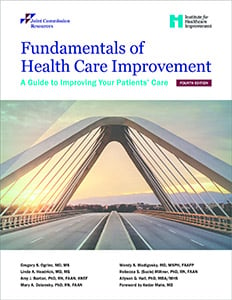
Fundamentals of Health Care Improvement: A Guide to Improving Your Patients’ Care |
Since 2012, Barton has been an editor and/or contributor of “Fundamentals of Health Care Improvement: A Guide to Improving Your Patients’ Care.” Published by Joint Commission Resources, the third edition sold 6,000 copies and received 4 stars from Doody’s Review Service, a medical book review service designed to assist medical libraries and institutions with their purchasing decisions. The book is among the publisher’s best-sellers, according to a representative for Joint Commission Resources.
Barton first got involved with the publication while developing content for the second edition. Since then, the editorial team added another physician, three nurses, and a healthcare administration expert to the mix of co-editors to give the publication a more “balanced” perspective of healthcare improvement.
“Because healthcare improvement is a team sport, and the original team was three physicians and a nurse, we decided to even things out,” Barton says.
Barton, who also contributed three chapters to the textbook, says the most significant changes in the latest edition center around the concept of health equity.
“Bringing in an equity lens really takes it to another level because you actually have to consider social determinants of health as you are looking at improvement work,” she says. “If an intervention isn’t working, what else is going on and how could it be driven by social determinants of health?”
Barton also says her involvement with the publication gives her a chance to continue her legacy in the field of healthcare quality improvement, which she started working on in the 1990s.
The benefits of publishing
Although the financial compensation from the textbook is nothing to boast about, Barton says she enjoys collaborating with other healthcare experts and enhancing her knowledge of healthcare improvement.
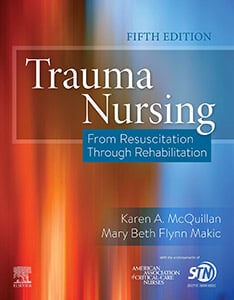
Trauma Nursing: From Resuscition Through Rehabilitation |
“It’s kind of fun to write with other people,” she says. “We had monthly conference calls while the book was in progress. Just learning about where others’ chapters were and working towards a shared vision of what we wanted the book to look like is always fun.”
Makic agrees that collaboration is one of the many perks associated with textbook publishing.
“I believe in mentorship and the easiest way to mentor is to engage in projects,” she says, adding that includes mentoring past students in the essential steps of publishing and disseminating information.
Makic also says publishing also gives her work some additional visibility and recognition.
“Being involved in these books has helped people find my name and helped establish me as an acute and critical care expert – even though most of my keynote presentations over the years are based on my body of expertise in evidence-based practice,” she says.


